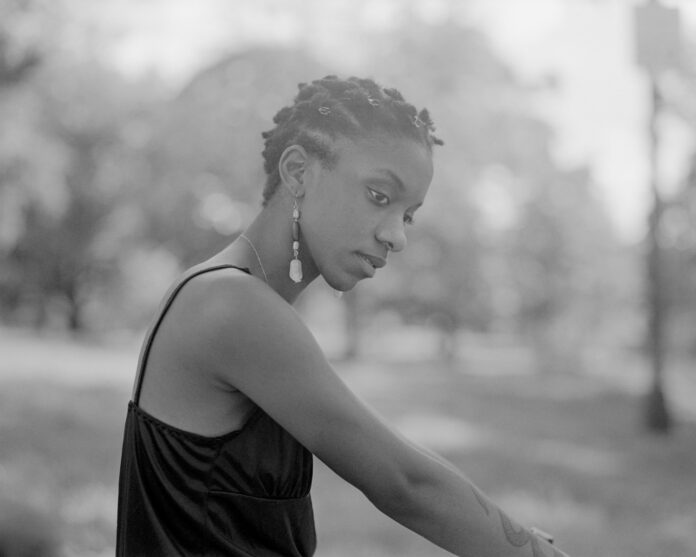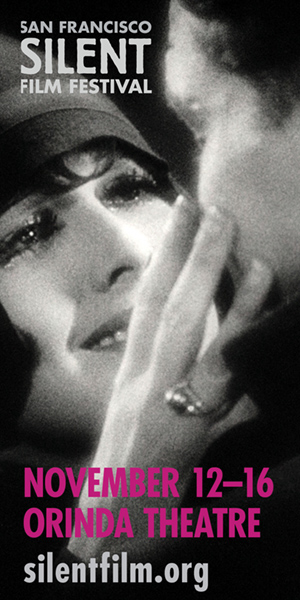Pier 24 will be closing January 30th after 15 years on the Embarcadero, and its current and final show, Turning the Page, is not to be missed.
The sprawling 28,000 square foot building, nestled at the foot of the Bay Bridge, used to hold cargo for various steamship companies. Since its opening as a gallery in 2010, it has instead held the title of largest exhibition venue solely dedicated to photography in the world, and “Turning the Page” truly takes advantage of the space’s massive footprint. (The museum’s lease expires in 2025; the foundation behind it chose not to renew.) This particular exhibition focuses on photobooks as an integral part of the lineage of photography—highlighting some of the many historic books that have left a mark on our understanding of photography—while making the case for many contemporary works to be included in this important conversation.
The entry to the exhibition space contains a wall-mounted installation by Libby Black, which includes beautifully intricate facsimiles of seminal photobooks created from humble materials: cardboard, glue, graphite, and paint. The sculptures were commissioned by the director and curator of the space Chris McCall, after a years-long process of conversations with artists about the photobooks that influenced them and their practice. Displayed like records on the wall, Black’s piece highlights books as wide-ranging as The Great Unreal by Tayo Onorato and Nico Krebs and LaToya Ruby Frazier’s The Notion of Family. The time and labor evident in Black’s work nods to the translation that happens through image-making and digestion, rendering these publications as the precious gems they are, and making viewers wish they could look inside.
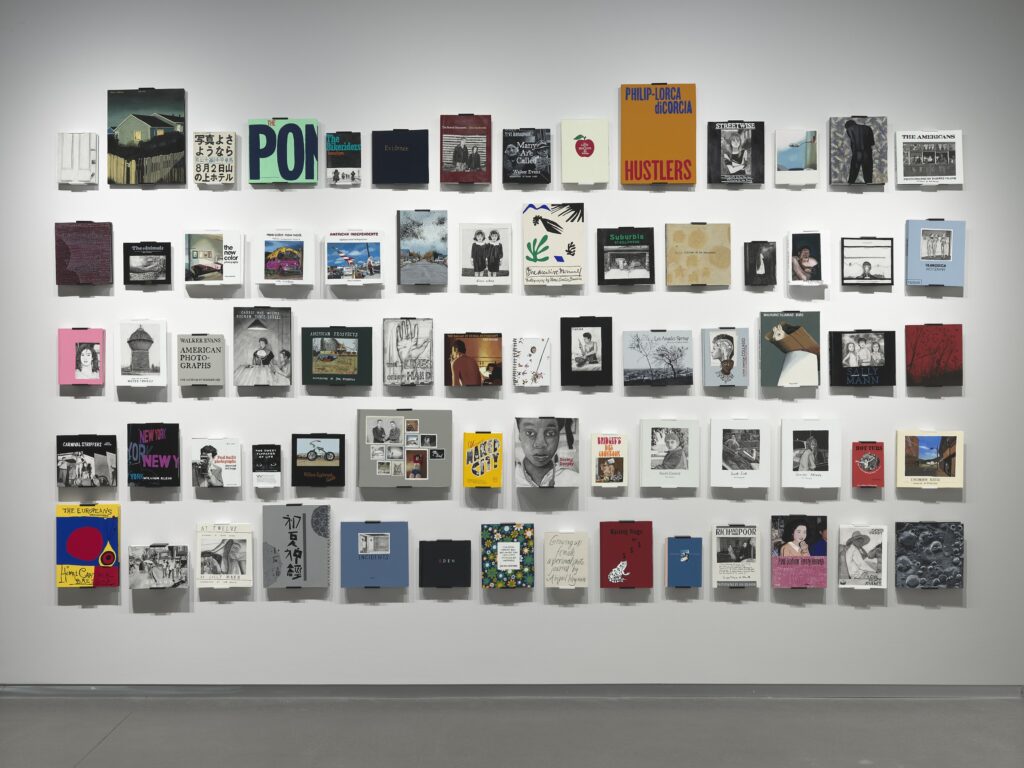
Many of the books highlighted in Black’s sculptures are so canonical as to be impossible to track down a copy, much less own. Luckily we have the privilege of “opening” (or rather entering into) several of the books as we step into the gallery. The exhibition translates and adapts the interior themes of 16 important photobooks into three-dimensional space, each room of Pier 24’s gallery dedicated to one publication.
It’s impossible to pick favorites in such a vast exhibition, and one of the pitfalls of having such a large labyrinthian space is that you can miss entire bodies of work if you aren’t careful in navigating Pier 24 and allocating adequate time (and perhaps multiple visits) to soak it all in. The sheer quantity of the work on display almost tacitly implies a comprehensiveness, even though one logically knows that it’d be impossible to contain every photobook project worth its salt into a single show (check out Pier 24’s recent publication Photobook List for more).
What’s lost in focus is more than made up for in the strength of the work in the exhibition, and the care with which it is displayed to mirror choices within each project’s respective publication. Rather than telling us what to think, curators McCall and Allie Hausslein have created the ideal conditions for the photographic work to be the best manifestation of itself, allowing viewers to intuitively make connections between bodies of work just like we might discover a new book or make an unexpected link between publications based on where they are situated on a library shelf.
A book is a container for ideas, and each room of this exhibition functions similarly, allowing viewers to step into the world of a different artist project—spanning vast geographic distances, timescales, and approaches to seeing. Each installation responds to the photographic series contained in the space, reflecting elements of the content and pacing of the book in how it is arranged and displayed. This attention to sequence, context, and modes of presentation has always been a fixture in photography as a medium, but it is rare that one gets to see so many different projects fleshed out so comprehensively in one location, each emphasising distinct approaches but also allowing for unexpected connections and lineages between bodies of work.
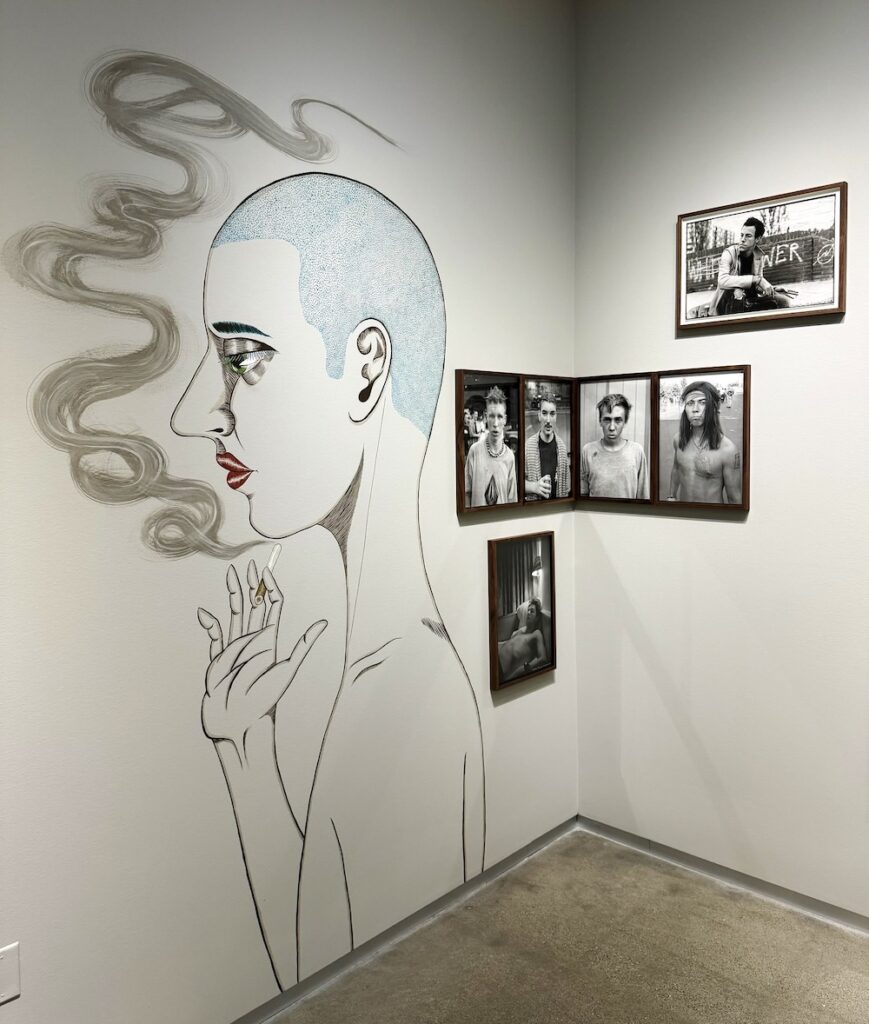
There is something for everyone to appreciate in Turning the Page. Photo history buffs will be chuffed to see a rare first edition of, and gelatin silver photographs from, Les Americans (The Americans) by Robert Frank, a series once considered such an unflattering portrait of this country that no American imprint would take it on as a publishing project. The book was one of the first in the context of fine art photography to harness the power of sequencing and order of images to subconsciously establish “unpleasant connections,” undermining our infatuation with cars by linking them with death, providing acned counterpoints to mass media’s romanticized view of cowboys, and laying bare this country’s racial caste system with the flick of a shutter button.
Help us save local journalism!
Every tax-deductible donation helps us grow to cover the issues that mean the most to our community. Become a 48 Hills Hero and support the only daily progressive news source in the Bay Area.
Each project included in the exhibition has a significance as it relates to how photographic form and content can support one another to great effect. Ravens, a photographic series by Masahisa Fukase first published a book in 1986 and reissued by Mack books in 2017 is a masterclass on photography’s potentiality to take a recurring subject from sign to symbol to metaphor with care and time. Fukase photographed ravens in landscapes surrounding Hokkaido Japan (at night, during the day, in flight, in stillness, in groups, in silhouette) and their palimpsests for years. The photographic prints shown in Pier 24 are loaned from a private collection and rarely viewable, impactfully installed on the wall with gaps such that we begin to take on the psychic weight of this repeating ominous motif. The wonderfully impressionistic grainy images birds take on an emotional valence, reflecting the artist’s own melancholic interiority as he dealt with divorce, and alluding to psychological reverberations of postwar Japan.
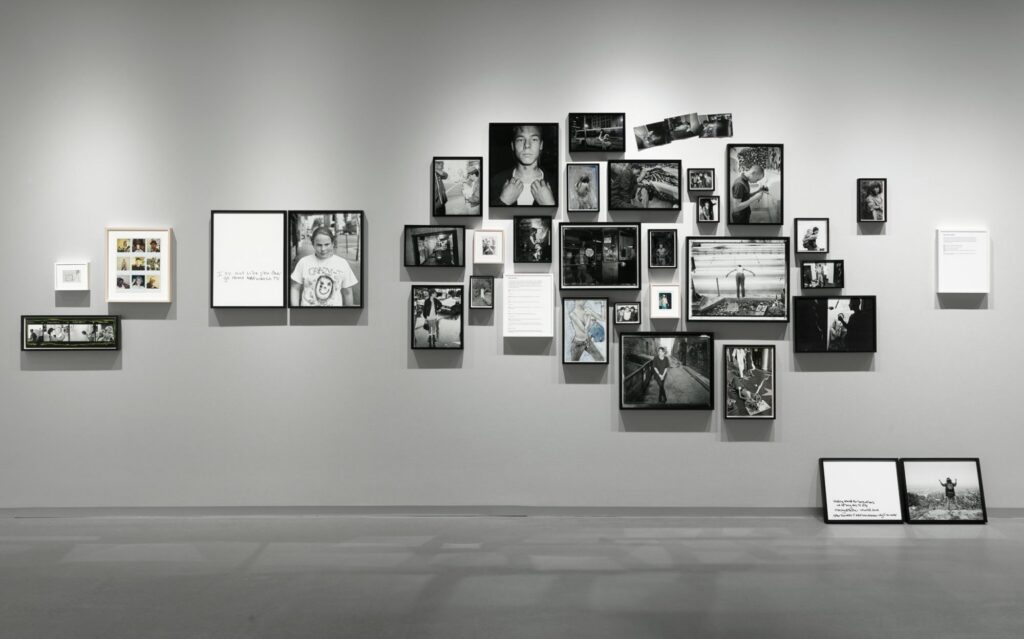
Turning the Page also helps solidify Bay Area practitioners’ impactful influence in the photobook genre, which devotes rooms to Larry Sultan’s seminal project Pictures from Home and Jim Goldberg’s Raised by Wolves. The latter contains images that Goldberg took over the course of ten years, documenting runaway youth accompanied with their writing and annotations, allowing his subjects to talk back to the work. The tactile way that Goldberg works with digesting and remixing his own archive of images (cutting, painting, playing with layering, scale and text) spills into the walls of the space, and his gritty influence on subsequent punk/skate photographers like Ed Templeton (also included in the show) is evident. Vitrines showing multiple Xeroxed maquettes of the book in progress allow us a rare view into the artist’s iterative process and the project’s evolution over time.
In exhibition room 3 (an ancillary room branching directly off of Goldberg’s maximalist installation), Donavon Smallwood’s Languor provides a breath of fresh air and stops time in its tracks. You can palpably feel the artist’s lifelong relationship to place in his series of tender-yet-powerful environmental portraits of young Black park goers his age, peaceful landscapes and close-up natural elements taken in New York’s Central Park during the pandemic in 2020. While creating this project, Smallwood delved into the history of Seneca Village, a Black community that was displaced via eminent domain by the creation of the park. His project responds to the historic and ongoing hostility towards Black Americans with a soft force, carving out space for escape and tranquility.
In addition to Languor (and many other projects that there is not enough space to delve into), two of the contemporary series that are highlights in the exhibition are Rosemarie Cromwell’s El Libro Supremo de la Suerte and Vasantha Yogananthan’s A Myth of Two Souls. Both of these projects, while vastly different in content and form (aside from both artists’ expert sense of color and light), provide a more poetic approach to sequencing images, circumventing linear narratives to leave room for chance and spirituality as pathways to making meaning. Cromwell’s project uses the charada (a Cuban-Chinese number system where specific numerals are associated with symbols) as a guide to navigating the constellation images she took while living in Cuba. Yogananthan’s vast body of work photographed in India, Nepal, and Sri Lanka draws from stories in The Ramayana to blur lines between myth and reality, tracing how these legends seep into everyday life.
These poignant series are just the tip of the iceberg of this important exhibition, one that offers considerable space to grapple with the ripple effects of how the photobook as a form has influenced our conception of photography as a medium, and creates a scaffolding that impacts how we process and interpret images overall, even outside of the context of art.
TURNING THE PAGE at Pier 24, SF, is open by appointment Monday-Friday through the gallery’s permanent closing on January 31. More info here.

